![[MetroActive News&Issues]](/gifs/news468.gif)
![[MetroActive News&Issues]](/gifs/news468.gif)
[ San Jose | MetroActive Central | Archives ]
Welcome to CoyoteLand
Mayor Ron Gonzales and Cisco Systems Inc. hope to consummate their fairy tale romance by giving birth to the Coyote Valley Research Project. But while paving the last expanse of open space in San Jose may promise a theme park paradise for industry and real estate interests, the public is in for a wild and expensive ride.
By Mary Spicuzza
Illustrations by Steven DeCinzo
EVEN BEFORE THE first sip of his latte, Eric Morley is chipper beyond belief, considering the early morning hour he has chosen for us to meet. His handshake is firm, his attire valley-casual and the setting intimate as we settle into downtown's Il Fornaio coffee shop amid the slight bustle of hotel staff and energetic conventioneers.
As a consultant with the Morley Hunter Group Inc.--hired by Cisco Systems Inc. and its partners to grease the skids for its massive new headquarters in Coyote Valley--Morley has reason to be cheerful. If the massive Coyote Valley Research Park goes through as planned, he and his employers will have 688 acres of undeveloped, virgin land laid out for the development of Cisco Systems' dreams, as well as an open door for future development by other industrial giants.
Morley peppers his print-ready PowerPoint presentation with environmentally sensitive and community-friendly lingo, ripe with references to Cisco's commitment to an "industry-government collaborative" and respect for the area's "agrarian past." With full-color charts, graphs and visionary drawings, Morley has found innumerable ways to express the fact that Cisco doesn't just want to create a 6.6 million square-monument to itself at South County's high-profile U.S. 101 and Bailey Avenue interchange, but to be a model for Silicon Valley's world-class future--the way the corporate worlds should be built.
Cisco has supplied him with charts paying homage to San Jose's smart growth management as well as bucolic images of palm-tree-lined campuses overlooking open fields. There are drawings of futuristic housing complexes and train photographs against the backdrop of landscaped foothills and widened highways that don't yet exist. All show that, in paving over San Jose's last large remaining chunk of open space, Cisco truly aims to provide a benevolent community service.
But don't quote him on that. Seriously. Morley has come to this meeting to share information, not to have his words seen in print.
And this is a shame, I think, taking copious notes in my notebook, because Morley has quite a story to tell. It's not one of those complicated tragedies where undeserving innocents die and family fortunes are squandered--but a fairy tale romance between Mayor Ron Gonzales' City of San Jose and Silicon Valley's Prince Charming, its own answer to Seattle's Microsoft, Cisco Systems.
By the end of the presentation it's clear: Silicon Valley real estate barons believe a developed Coyote Valley will give Disneyland a run for its money as "The Happiest Place on Earth."
Character Actors: Meet the CoyoteLand players.
Surge & Destroy: Cisco Systems doesn't want any tacky neighbors in its new open space digs, and especially not Calpine's proposed power plant.
With the soothing, fatherly confidence of The Love Boat's Captain Stubing, Morley says that since the mid-'80s, the City of San Jose has been waiting for a prince to come along and develop South County. In this fairy tale, Cisco, well-endowed with exploding stock options, promises to be Mr. Right.
So climb aboard the futuristic tram, valley dweller and taxpayer, for a view of the new CoyoteLand. Hold tightly to those tickets--they're not cheap. Look out the windows and into the future.
Taxpayer Dime Toss
NO QUESTION ABOUT IT: If Cisco settles into Coyote Valley, it will bring jobs, a bigger and better tax base, and political clout for Mayor Ron Gonzales. Public relations fact sheets provide nitty-gritty details of the billions of dollars the Coyote Valley Research Park can bring to the City of San Jose and Santa Clara County. Financial consultants from Hamilton, Rabinovitz and Alschuler Inc. estimate the park will provide $2.8 billion per year in "direct, general economic impacts to the City of San Jose and Santa Clara County" and a $1 billion boost from campus design and construction work. In addition to the 20,000 high-tech jobs, building the campus could lead to 9,000 development and construction jobs. Looking into the future, planners see $242 million brought to the city in its 30-year future.
But the tax-fueled government subsidies needed to help Cisco build CoyoteLand, such as infrastructure costs, highway widening, BART and Caltrain boosts, seem far more elusive for Cisco and city planners to pin down. Once upon a time the city only offered subsidies to companies building in urban redevelopment areas, for projects such as the unsprawling downtown Adobe office. But that was before last December, when city officials decided that developers shouldn't be expected to pay for the extraordinary costs of developing Coyote Valley.
Cisco promises to pay its "fair share," but still can't toss out actual numbers quantifying how much is fair for the company--and taxpayers--to pay. Berkeley-based Economic and Planning Systems, hired last year by the City of San Jose, estimates that the cost of Coyote infrastructure and flood control alone could total $267 million. At CoyoteLand, taxpayers courted to Cisco's side, dollar signs in their eyes, may end up tossing tons of cash into the corporate wishing well before reaping the benefits of Cisco's burgeoning wealth.
Calpine Pie Toss
IF SAN JOSE SEES CISCO as its fairy tale Prince Charming, it sniffs at the proposed Calpine energy plant as a toad that isn't worthy of a future, beyond perhaps the fate of a frog-leg dinner. Calpine and its partner, Bechtel, deserve respect for their determination to push through the Metcalf Power Plant, nestled just south of Tulare Hill along Monterey Highway, where they would be close neighbors to Cisco City. But they've been fighting an uphill battle the entire way. The impressively vocal Santa Teresa Citizen Action Group, which undoubtedly has visions of plummeting property values once their homes offer picture-window views of a power plant, condemned Calpine just after plans were announced.
Yet the group can't get enough of Cisco. A recent STAG press release raves, "The Cisco campus is a planned and responsible development that fits the long-held General Plan for the City of San Jose."
To add to Calpine's woes, Cisco pooh-poohs the power plant project as a threat to their employees' health and safety, and Mayor Gonzales has also given Metcalf a definitive thumbs down. (See related story.)
Never mind that the Bay Area's biggest problems center around not enough electricity and too much traffic.
Lonely Calpine has found unlikely advocates in the local environmental groups who say their project wouldn't be nearly as catastrophic as the Cisco campus. While not normally rallying for fewer trees and more power plants, members of both the Sierra Club and the Audubon Society see Calpine as less hazardous than the Cisco-bound traffic and the ensuing industrial sprawl filling the North Coyote Valley Campus Industrial area's 1,400 acres.
Dan Kalb, president of the Sierra Club's Loma Prieta chapter, says, "If you had a gun to your head and had to pick a project to fight, either Calpine or Cisco, pick Cisco. This is a tremendous, sprawling, horrible plan that will impact open space, green space, and habitat."
Still, shunned environmentalists seem to have trouble getting the message across as local politicos, neighborhood groups, business representatives and their entire families all gather around to seal the fate of Calpine as the power plant that was not to be.
Gridlock, The Traffic Ride
Cisco vows it is a corporation committed to alternative transportation, and promises to provide bicycles for employees to ride along the campus' rolling hills. But traffic reports show that anyone hoping to frolic at the CoyoteLand theme park will find that getting there feels frighteningly similar to a slow-paced ride on the bumper cars. While the planned bikes and pathways may be great for inside the manicured borders of Ciscoland, chances are slim that many techies will be peddling over Highway 17 or along Highways 101, 280, 680, 880 or 237 to get to work. As for outside the park, Gonzales wants to bring a Caltrain station almost to the research park's gates and a future light-rail line to its front doorstep, so Cisco can eagerly provide each employee with a bus and rail "eco-pass," according to its Transportation System Management (TSM) plans. No groundbreaking dates have been set for those projects, though. And that's something the taxpayers would pay for.
For all of its talk about the importance of alternative transportation, Cisco planners are calling for a massive parking lot with 22,000 parking spaces for a 20,000-employee facility. Apparently the widening of Highway 101, scheduled to be at least a six-lane road by 2003, isn't meant only to provide relief to the existing bumper-to-bumper traffic packing South County roads. Those bigger and better freeways promise to make room for more high-tech workers to get to work. The City of San Jose won't be expected to foot the bill alone for all of the highway work. Cisco promises to pay its "fair share," and Governor Gray Davis has offered up $18 million from state funds to cover costs of the work needed for the U.S. 101 and Bailey Avenue interchange and another $5 million for BART. According to the Sierra Club's study, Sprawl Costs Us All, city and state taxpayers aren't alone: the federal government spends about $173 billion each year for new highway construction, while only providing $41 billion for public transportation projects.
Put It in Reverse!
According to Cisco maps, employees driving to the campus will actually be engaging in a ritual known as the "reverse commute" because so many current Cisco workers live between its Alviso project and the planned campus in Coyote Valley. Trouble is that the average cost of a home in Silicon Valley is ridiculously higher than in nearby Salinas, San Benito and even Monterey and Santa Cruz counties.
Mardi Wormhoudt, chair of the Santa Cruz County Board of Supervisors and former mayor of the City of Santa Cruz, says the Environmental Impact Report failed to address the fact that Cisco's massive project will affect the entire Bay Area, especially the South Bay. And Gary Patton, a former Santa Cruz County supervisor who now heads LandWatch Monterey, a community watchdog group, says that the reverse commute promise is based on a deeply flawed model.
"Everything north costs more; everything south costs less," Patton says. "As soon as the announcement came out that they were doing this project, it became very clear to me that it was going to have a major impact on Monterey."
A recent study, completed last week by independent planners, supports the concerns of Patton, Wormhoudt and critics from the Association of Bay Area Governments (ABAG), arguing that any EIR traffic patterns should be based on commuters traveling from real, available homes, rather than developers' promises about future housing opportunities.
Patton says highways to the south will be experiencing very real congestion, adding, "The city will have to make a choice. The mayor is dedicated to shoving this process through, but if they approve it based on flawed reports, both Cisco and the city will find themselves mired in litigation."
Housing Crunch Fright House
HAILED BY DEVELOPERS as a pinnacle of proper planning, the Coyote Valley Research Park hangs on the principle that if the city and Cisco can build the jobs, solutions to the Bay Area's housing shortage will soon come. San Jose politicians say that the city has supplied homes for burgeoning business districts in Santa Clara, Palo Alto and Sunnyvale, and now it should share in the wealth of its own high-tech haven and live up to its appellation as the Capital of Silicon Valley. Trouble is, Silicon Valley doesn't have much available real estate to speak of, much less anything bordering on affordable housing.
According to John Landis, a professor of urban planning at UC-Berkeley, poor planning has already contributed to a severe shortage of 6,000 housing units in San Jose alone. And with Silicon Valley housing costs averaging about $500,000 per home, chances are South County's high-tech explosion will further displace the region's existing status as hub of the county's closest thing to affordable housing.
ABAG expects that about 40 percent of the new homes for Silicon Valley will be built in San Benito County over the next 10 years, meaning that Salinas farmworkers' families get to compete for housing with Cisco employees--who earn an average of $89,000 a year. Craig Breon, environmental advocate for the Santa Clara Valley Audubon Society, says that new housing developments like Marina's Armstrong Ranch Property already seem geared for those making high-tech salaries comparable to Cisco wages. Gibson Speno, partners in the Cisco campus, have visions of 3,600 homes and a golf course on the 18-acre site, which is a 45-minute drive from the Cisco campus.
Meaning that 20,000-plus high-tech employees flooding into the Bay Area, as promised by Cisco, will hold the power to build a Bay Area scene comparable only to the most horrific House of Horrors. Families and single types can hop on and cruise through halls lined with skyrocketing rents, housing shortages, even more gentrification and plenty of sobbing couch-surfers. Cisco could also help redefine the term "tortured artist" for the struggling Bay Area creative arts community, already fighting for elbow room with all of those energetic new dotcoms and casual-yet-space-hungry web startups. LandWatch Monterey's Patton says smart planning requires combined-use planning, like joint work/living situations. But Cisco, already so proud of its plans for a cafe, dry cleaning, gym and day care, doesn't consider on-site employee housing as an option.
Threatened and Endangered Species Merry-Go-Round
THE PRIDE OF THE Cisco project in Coyote Valley lies in the ability of developers to honestly say that the planned campus won't "take" any land considered crucial endangered-species habitat. Yet most ecologists and environmental activists now know that endangered and threatened plants and animals don't rely only on tiny chunks of habitat. Silicon Valley's remaining critters, like the Bay checkerspot butterfly, burrowing owls, bats and others, need connected corridors of open space to roam and reproduce. Since rare animals have trouble migrating across highways and subdivided suburban sprawl, conservationists say now is the time for an overarching conservation plan, rather than the piecemeal, project-by-project planning currently in practice.
"In order to save species like the Bay checkerspot, we need a regional approach to planning," says Dr. Alan Launer, of Stanford's Center for Conservation Biology. "The problem with fast development is that all of a sudden species can disappear. The Santa Clara Valley was beautiful farmland--that was our heritage. Now the Pruneyard is a shopping mall."
Preserving other life-forms gets more complicated when massive projects like Cisco's Coyote campus affect not only open space but less tangible environmental concerns, like air quality. Audubon Society's Breon believes that the air pollution from the cars of those 20,000 employees could help finish off South County's struggling Bay checkerspot butterflies. The bugs rely on the valley's serpentine hills covered in native grasses for their survival, and since more cars fertilizing the fields with nitrous oxides means invasion of nonnative plant species, butterfly habitat may fade away due to air pollution alone. Yet the CoyoteLand merry-go-round celebrates Cisco's kinder, gentler approach to species extinction. Fun-loving families can ride the enameled backs of these glorious creatures. After the project, that may be all there is left.
The Fortune Teller
WITH SO MANY different players hinting at litigation over the Coyote Valley Research Park, only a psychic could know for sure who will be first to serve developers with papers. Perhaps Patton's LandWatch Monterey, the Audubon Society, Sierra Club or ABAG will win the race to the courtroom floor. Their concerns are varied, but environmental and community watchdogs have found common ground in their allegations that Cisco's EIR is just plain inadequate. Breon fears for the fate of threatened species, Kalb and his Sierra Club are hosting community workshops to address Coyote Valley sprawl, and Patton and ABAG both say an acceptable EIR must address the region's worsening housing shortage and traffic jams. Perhaps even Calpine will file suit for being clearly edged out of Silicon Valley's plans. Cisco and Gonzales may be rushing to break ground, with Gonzales even attempting to overhaul the Planning Commission--warning that members need to balance their concerns with the ability to act quickly. But moving too fast could leave both Cisco and San Jose stuck in litigation for years to come.
[ San Jose | MetroActive Central | Archives ]
Copyright © 2000 Metro Publishing Inc. MetroActive is affiliated with the Boulevards Network.
For more information about the San Jose/Silicon Valley area, visit sanjose.com.
![]()
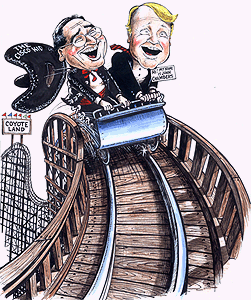
![[line]](/gifs/line.gif)
![[line]](/gifs/line.gif)
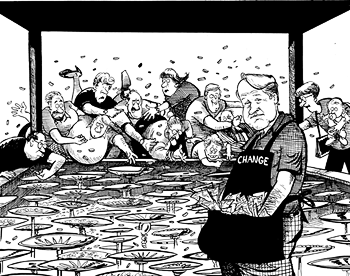
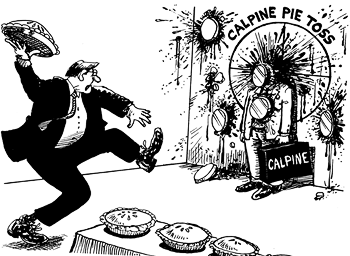

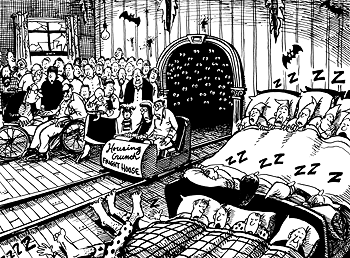
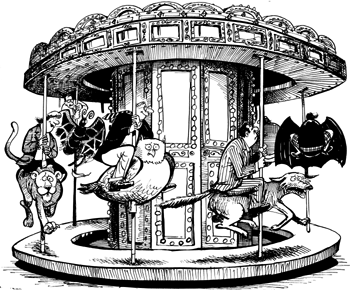

From the September 7-13, 2000 issue of Metro, Silicon Valley's Weekly Newspaper.